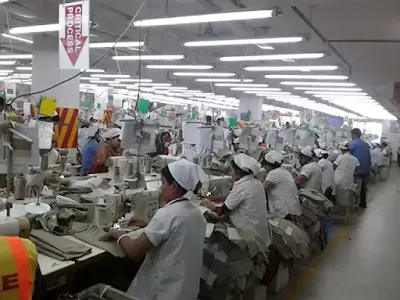Standard Operating Procedure (SOP) for Ledger Management in Industrial Stores
Welcome to my website Industrial Engineering, your trusted source for industrial engineering practices and efficient store management techniques. In this post, we discuss the essential SOP for ledger maintenance, a critical aspect of inventory control in manufacturing and industrial settings.
Purpose of the Ledger SOP:
The main objective of implementing a ledger management Standard Operating Procedure is to:
Ensure accurate tracking of all store items, including style items, daily moving stock, common supplies, and stationery.
Maintain up-to-date records through regular updates, whether manually or digitally, for effective inventory control.
Scope of Ledger Management:
This SOP covers the systematic recording of all items leaving or returning to the store. It aims to streamline inventory processes, reduce discrepancies, and facilitate easy audits.
Responsible Personnel:
Stores Manager / In-Charge: Responsible for overseeing ledger maintenance.
Store Keepers: Accountable for recording transactions manually or maintaining digital records, ensuring accuracy and timeliness.
Ledger Maintenance Procedure:
Segregated Ledgers: Maintain separate ledgers for:
Style Items
Daily Moving Items
Common Items
Stationery Supplies
Recording Transactions: All Goods Receipt Notes (GRN), Goods Issue Notes (GIN), and returns must be accurately entered into the relevant ledger, reflecting current balances.
Update Frequency: Ensure daily updates to keep records current and reliable.
Format: Ledgers can be maintained either manually on paper or digitally, based on available resources and organizational preferences.
Benefits of Proper Ledger Management:
Consolidated Record-Keeping: All store items and balances are stored in one centralized location, simplifying tracking and reporting.
Enhanced Inventory Control: Accurate records reduce stock discrepancies, prevent overstocking or shortages, and facilitate audit readiness.
Materials & Data Sources:
Information/Data from: Stores department and relevant inventory records.
For more insights on industrial engineering, store management, and operational best practices, visit Industrial Engineering. Implementing these SOPs will help streamline your inventory processes and improve overall store efficiency.
Thank you for reading. Your support means a lot to me and I'm grateful for your encouragement to create more content related to Industrial Engineering. Feel free to share your thoughts on how I can improve this article or suggest topics for future posts.
Related SOPs You Might Find Useful:
#MerchandisingProcess #BOM #TrimsAndFabrics




